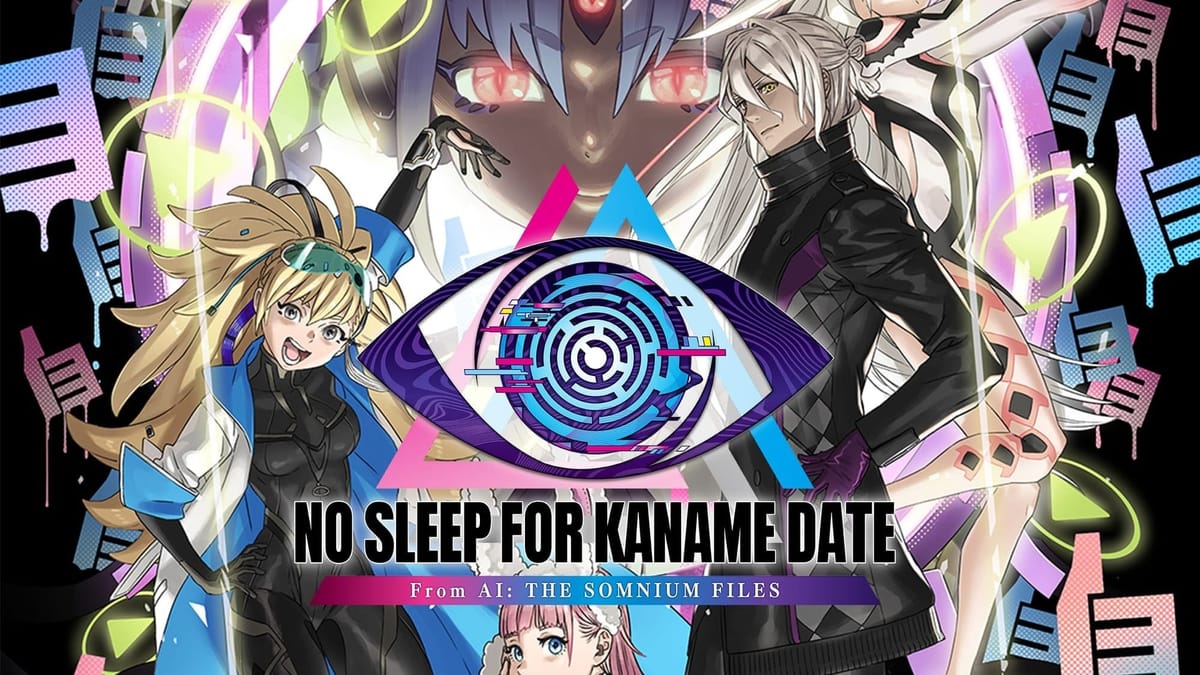
Series creator Kotaro Uchikoshi described the side entry, No Sleep for Kaname Date from AI The Somnium Files as “[a] stunning, moving, and thrilling experience.” A game made “by those who love the AI series, for those who love the AI series.” It's difficult to succinctly summarize the series in a way that captures its full essence. It's a gruesome neo-noir murder mystery, where the victims die in brutally horrific ways. It's also a series where a dance number in legally distinct Minecraft occurs in order to find a serial killer. This is a visual novel series where detectives discuss in gory details how a body was sawed in half, but the next moment the leads are shouting how much they love turtle shell bondage porn, or singing the Fortnite Chug Jug song.
Yet there is one word I can describe Somnium Files as: Moving. Blossoming under the morass of dark and comedic tones are stories of powerful human experience. A father accepting his role as a parent for his daughter. A friend out to prove how a loved one is gentle and beautiful despite his appearance. A man with a cube as his head doing his best to support his son. The various tones of this series is what powers its emotional heft. No Sleep For Kaname Date remains no different. While this side entry may be lighter on plot and mystery, it remains moving. In many ways, it delivers some of the most powerful gut punches in the series.
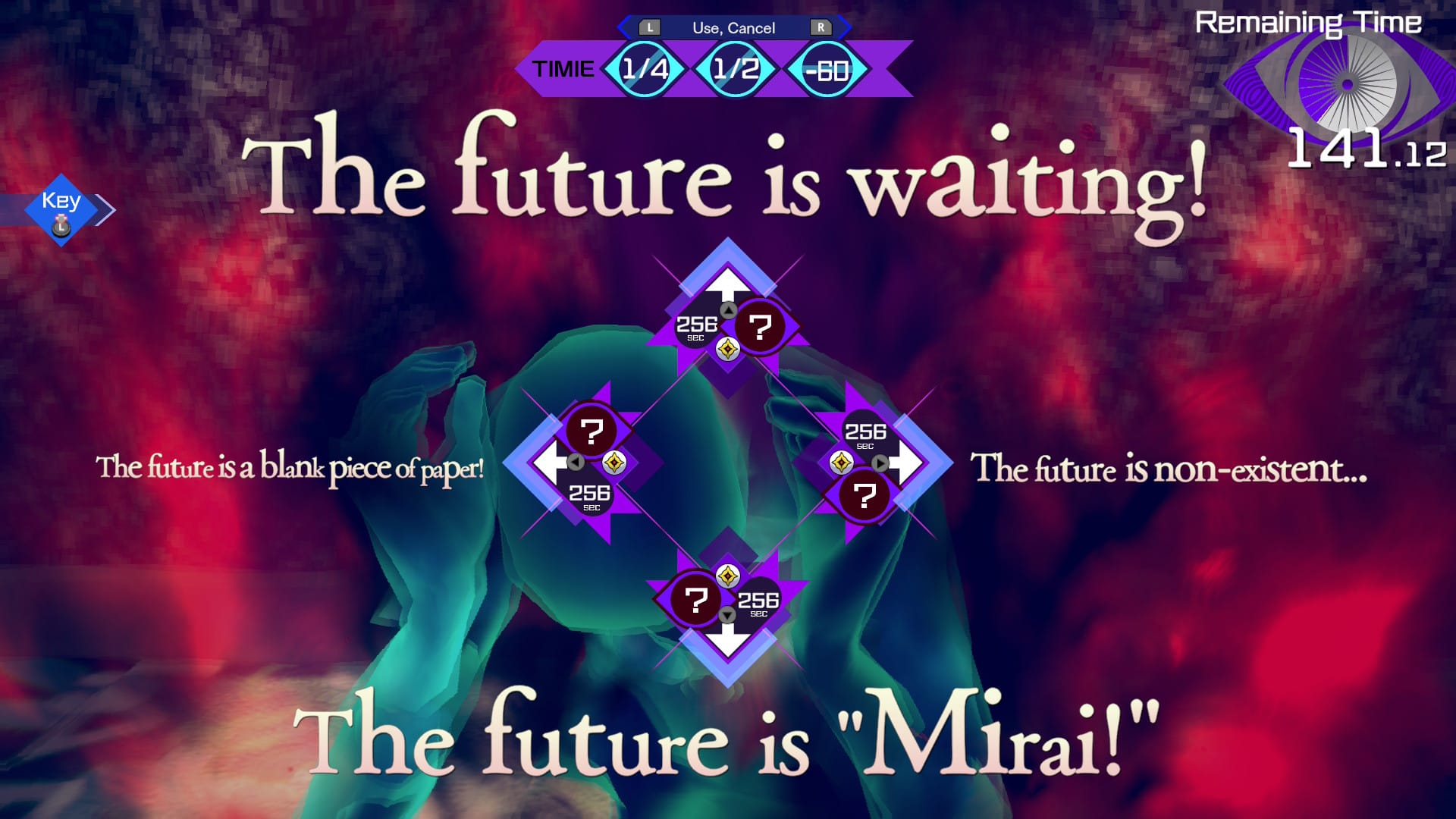
No Sleep For Kaname Date revolves around detective Kaname Date and his AI eyeball partner Aiba trying to locate the missing internet idol from the first game, Iris Sagan. The streamer has been abducted and forced to participate in the Third Eye Game: a series of escape rooms with deadly stakes. All the while a mysterious pod appears with a note stating “Psync me”. The premise weaves together its story and three main facets of gameplay: Investigation, Somnium, and Escape.
But before digging into the mechanics, let’s get this out of the way first. As the middle chronological entry of the Somnium Files series, do you need to have played the first game to understand No Sleep’s story? What about the sequel, nirvanA Initiative and its respective Twitter ARG that also happened to have Iris kidnapped and forced to play an escape game? For the latter two, no. There are interactions with certain characters that directly funnel into their roles in AINI, but these don’t go beyond cute references for fans. Nor are the more ambitious narrative elements expanded upon.
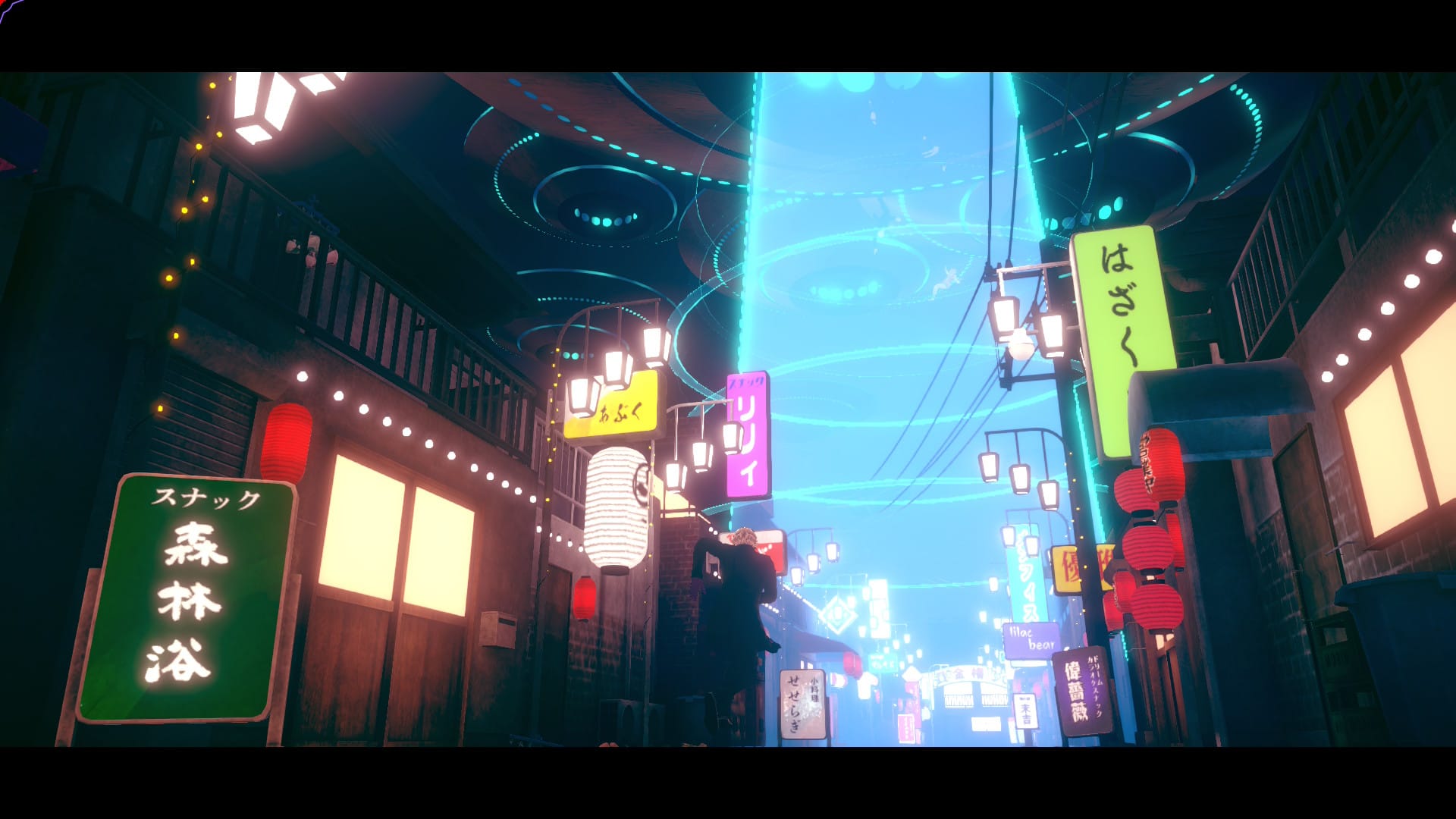
As for the first entry, that’s a tricky one to answer. Similar to the sequel, this game has a question at the start that serves as a toggle determining if the script will dive into spoilers for the first game. While this feature, for better and for worse, made sense for the second game’s stand alone story, I have trouble getting behind its inclusion for this game, which I’ll elaborate why after going over the story.
Not labeling Sleep For Kaname Date as a full sequel was a wise move to accurately convey the scope of the narrative. It took me 12 hours to beat instead of the 25 hours it took me to finish each of the two previous mainline titles. For fans of Insomniac’s Spider-Man, the scope is comparable to the Miles Morales entry. It’s attempting to tell a small, but complete story that builds upon where characters were following events of the first game.
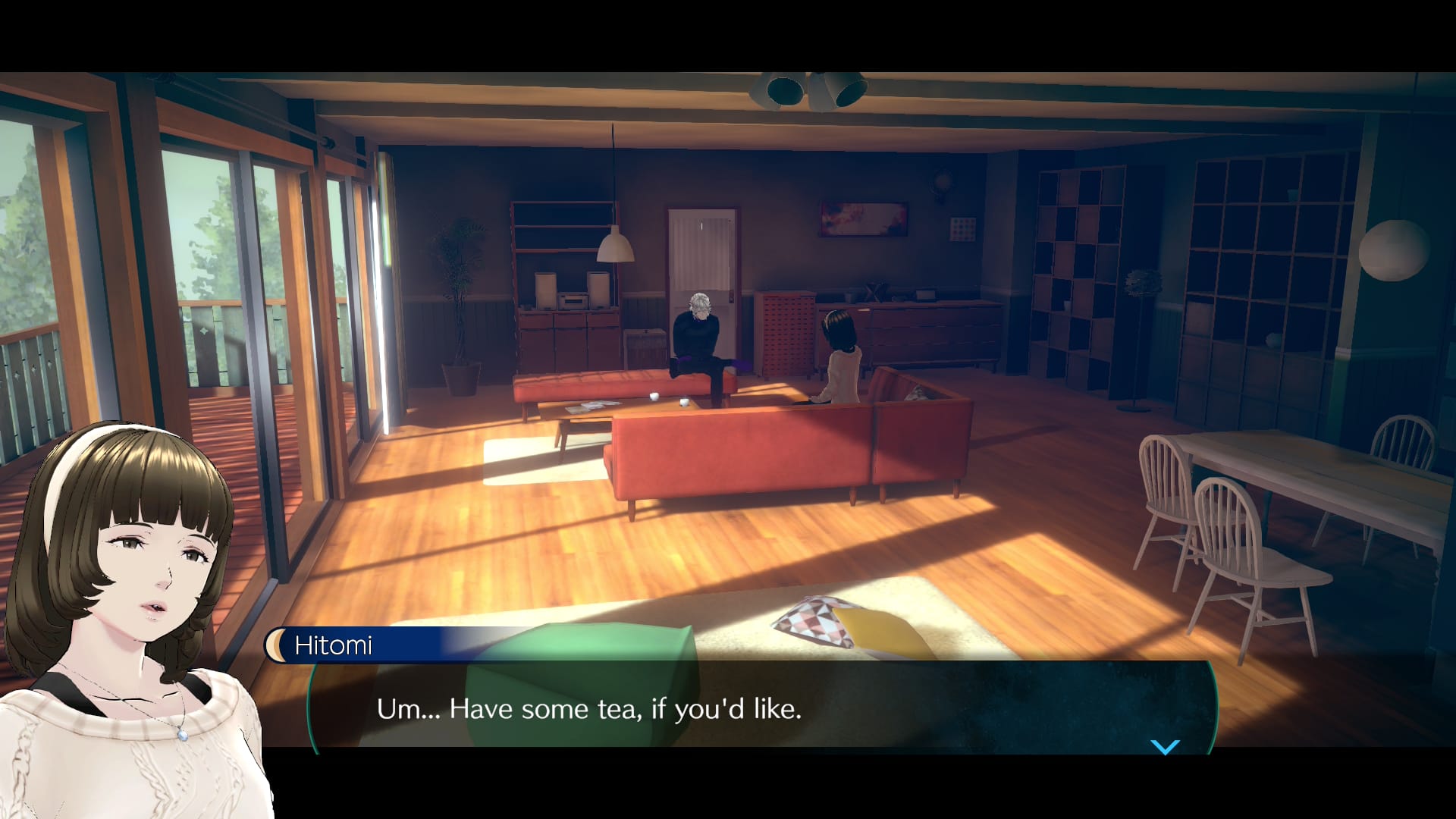
Story sequences are primarily presented during the investigation segments. From a gameplay perspective, they play out exactly the same as its predecessors. Date can interview witnesses and examine various points of interest in the environment in a point-and-click interface. These remain as intuitive as ever, clearly displaying whether people or objects can still be interacted with. While the game doesn’t outright say what to click on to progress, it does an adequate job at telegraphing this information, and directly stating when you have acquired enough information. Still, I found myself clicking on everything just to hear the humorous dialogue.
Wink Psync from AINI also returns, allowing Kaname Date to strike up a fruity pose to view a snippet of a subject’s current thoughts. Understandable omissions include nirvanA Initiative's 3D crime scene investigations. The scope of this title doesn't really offer crime scenes to begin with. Still, it was a slight bummer as that was one of my favorite gameplay mechanics from the previous entry.
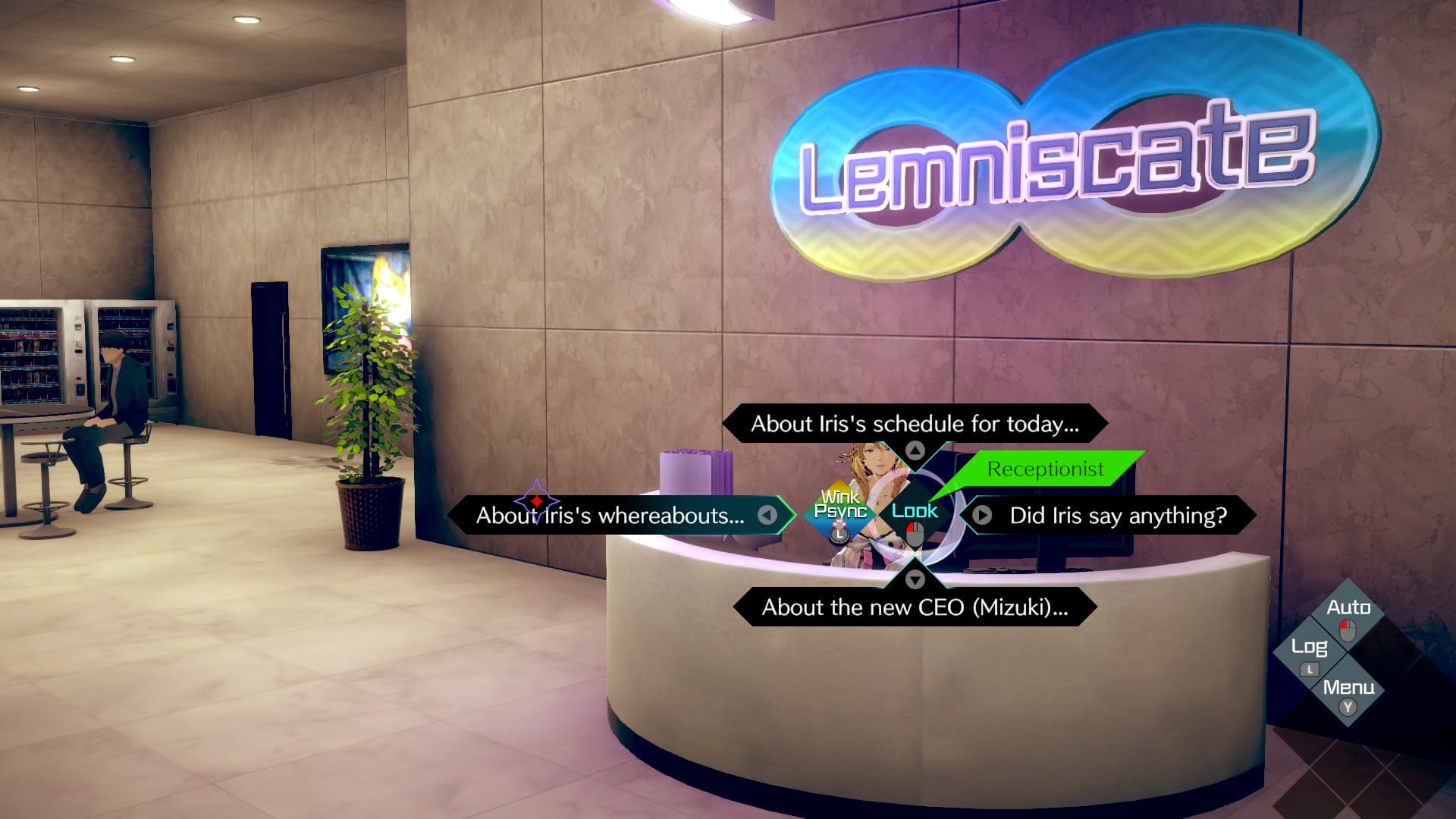
As for the actual content of the story, there are some positives and negatives to this side entry’s smaller scale approach. The primary gripe I have is how No Sleep does not have enough meat on its bones for the plot to stand on its own. What’s there is good, but the lack of substantial narrative progression makes the journey feel a bit too stretched thin. A large part of this has to do with how Iris and the overarching mystery of her kidnapping often feels listless. While I'm glad the playtime doesn't overstay its welcome, nearing the climax left me wanting a tad more.
This makes me even more glad that the series' signature branching narrative does not make a return. Initially, I was fine with its absence if it was for the sake of a concise story. No need to churn out quantity over quality for the sake of forcing a flowchart. But even so, the story often feels like it's spinning its wheels in regards to its central mystery. Adding branching routes would have overextended a tale that already meanders with various detours and dead ends.
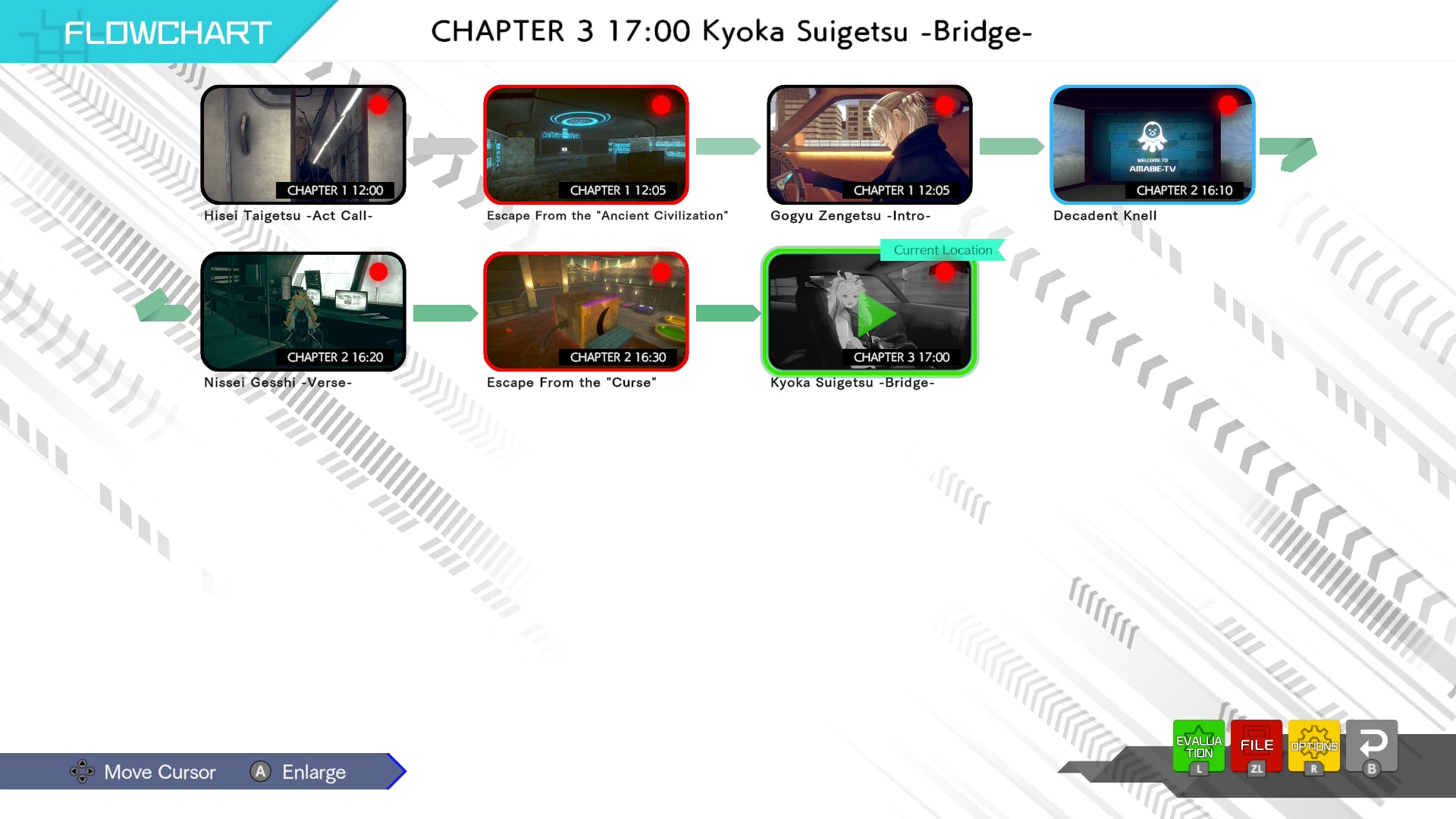
Sure, every lead contributes towards the sake of uncovering the truth. But often these clues either offer too little information, or are dead ends to make for a consistent escalation of stakes. One subplot in particular takes a majority of the middle section of the plot. To the game’s credit, it tries its best to connect to the overarching conflict, but the tangential nature to the mystery makes its integration feels clunky purely from the perspective of its narrative framework.
But that’s the most important distinction I want to make. My criticisms in the smaller scope lie mainly in regards to the construction and flow of the title’s story structure, not the contents of the story itself. Yes, it’s a bummer how the narrative framework holds a great story back from being amazing, but the gripes I have pale in comparison to its greatest strength. As a thematic epilogue to the first Somnium Files, No Sleep For Kaname Date soars.
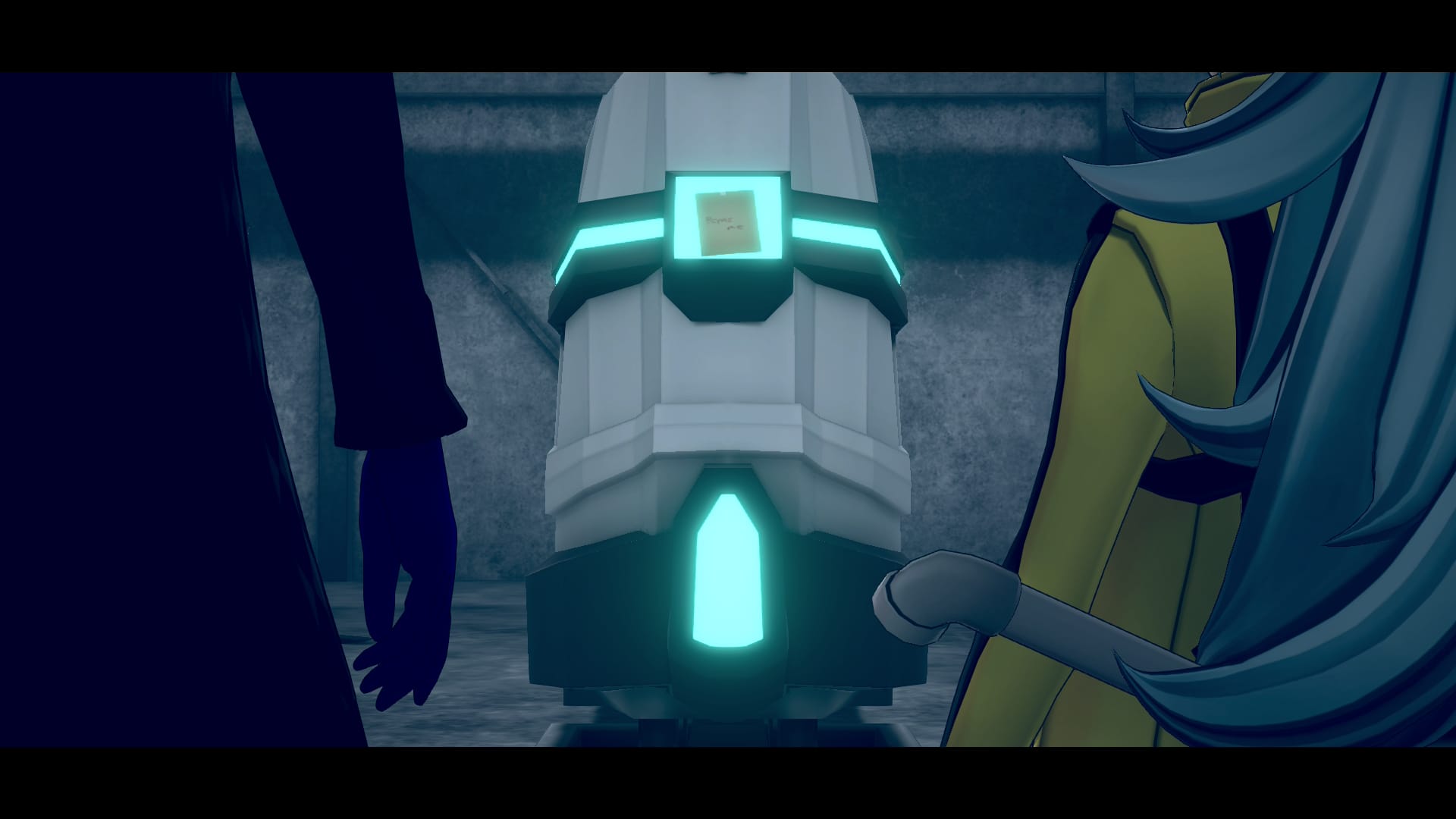
The first AI excelled at grounding its twisted murders by connecting them to the families of the suspect and victims. No Sleep wraps a heartfelt bow on that storyline in thoughtful and surprising ways. While I am slightly bummed that the more ambitious narrative elements from nirvanA Initiative aren't expanded upon, this is ultimately for the spin off's benefit. For those disappointed in AINI's surface level characterization of the returning cast, their short but sweet appearances in this game squeezes in believable characterization to deliver a touching extension of what came before.
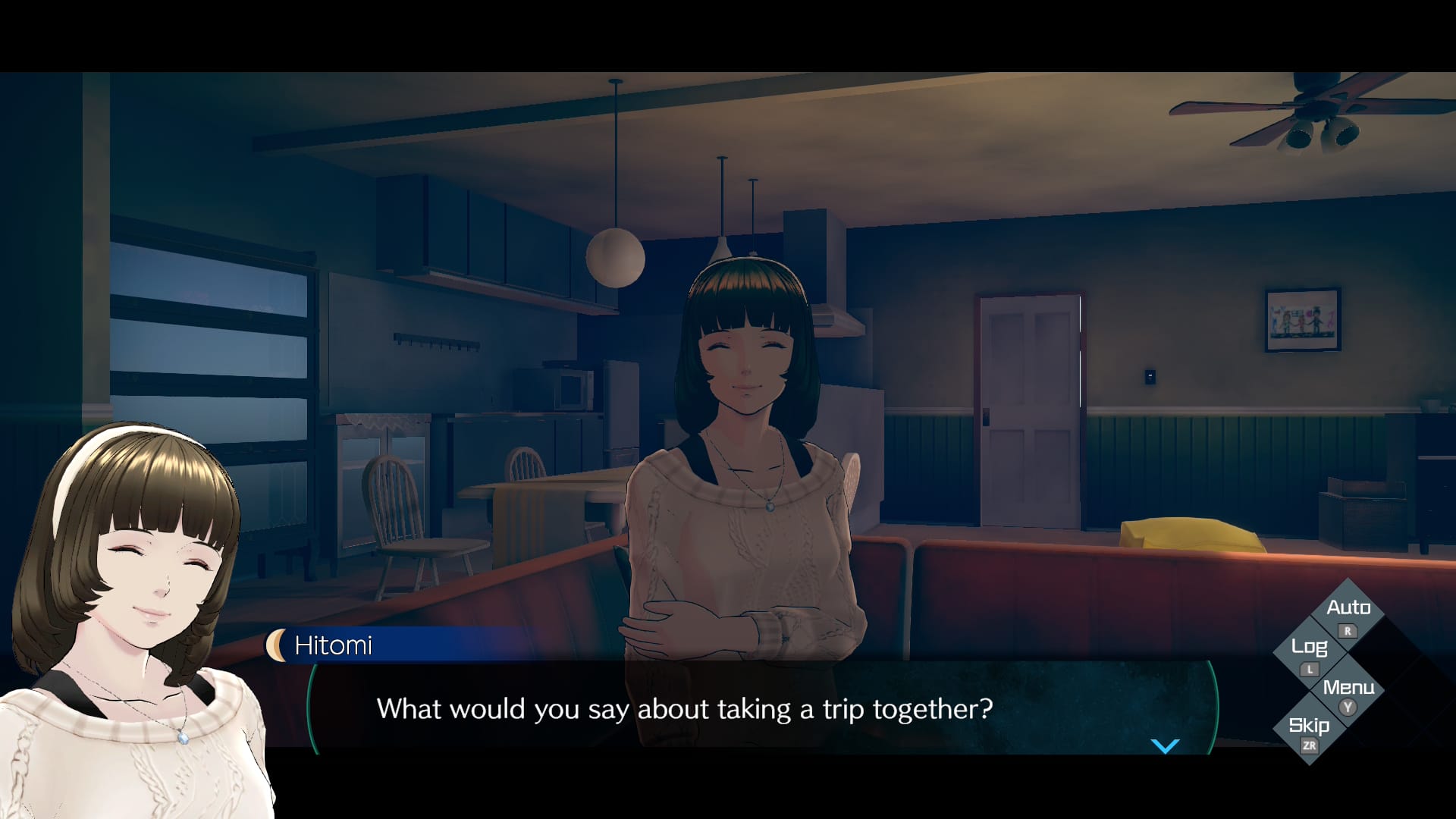
The light story is a vessel for these character driven moments to occur. They build on prior foundations to inform how the cast would react to these new situations. We get to catch up on the lives of these characters post Cyclops Serial Killings; seeing them still shaken, but trying their best to move on from the tragedy. The tangential subplot I nitpicked earlier is the most fleshed out example of this, delivering not only the emotional high point of the game, but arguably one of the most impactful moments in the series.
It makes it the spoiler toggle all the more baffling given how reliant on the first game these major sections are. Admittedly, there is some ironic humor that comes with seeing the characters tip toe around directly talking about spoilers without outright saying what happened.
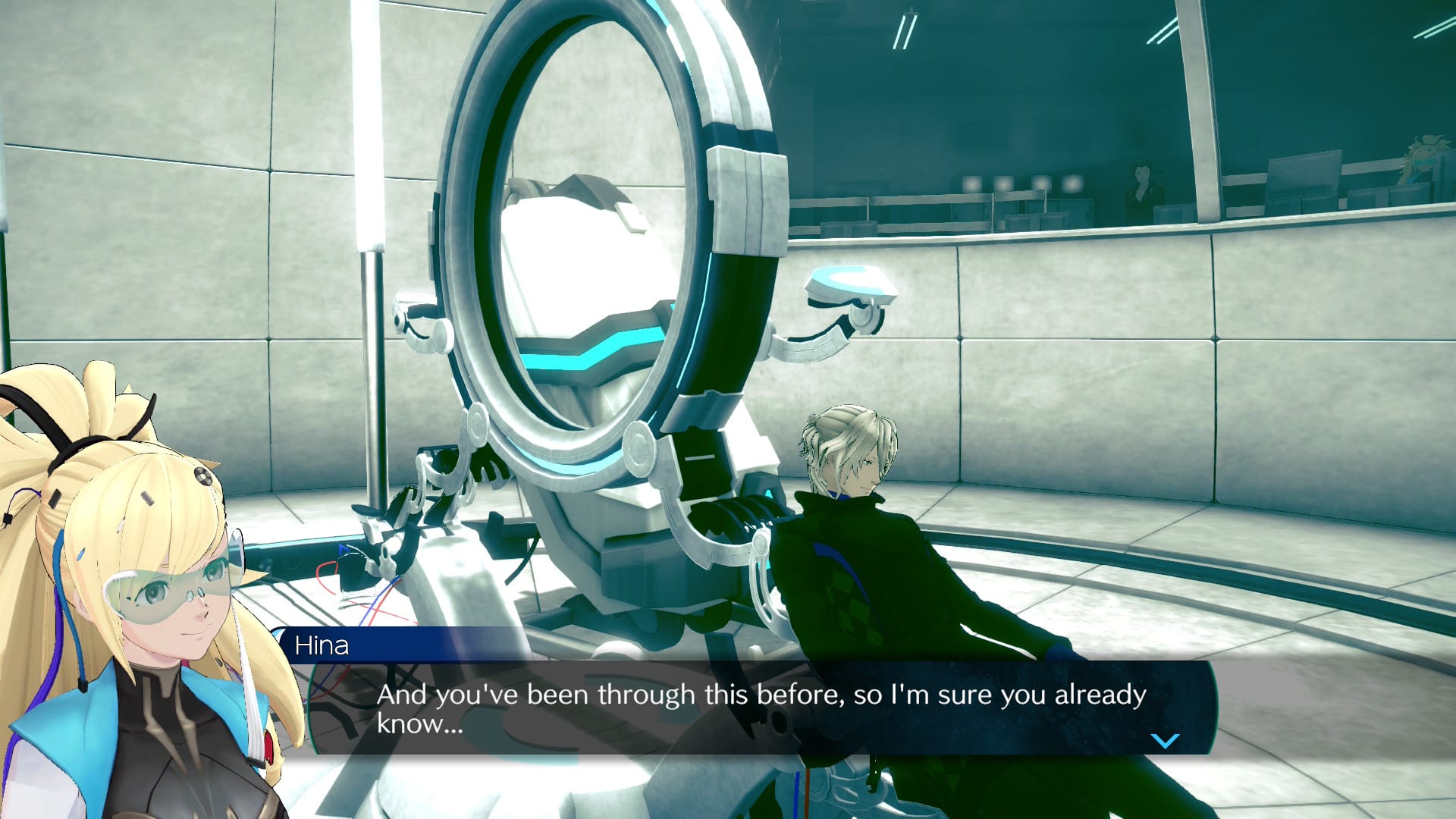
Even with its threadbare plot connections between the game’s reflexive scenarios and the overarching Third Eye Game, the beautiful thematic parallels between the old and new cast is the lynchpin that makes this side entry work. Newcomers Hina and Akemi are the heart and soul of No Sleep’s narrative, elegantly blending together the core messages of AI and AINI through both their involvement in the story, and how they compare and contrast with characters in the past. Kaname Date returning as protagonist further contributes to this notion.
Going in, I had my concerns with this horny old man being saddled as lead again. He had solid moments in nirvanA Initiative, but his nonstop porno mag bit, while still presented in creative and hilarious ways, made him feel the most flanderized out of the returning characters. Moreover, there were some missed opportunities with certain character interactions and lingering storylines that felt ignored.

Once again, No Sleep For Kaname Date’s role as an epilogue completely melted away my concerns. Although Date and Aiba don’t have a substantial arc akin to their first outing, their lack of development is leveraged as a boon. Their previous growth serves as a baseline to invite the new and old cast process their grief instead of bottling it up. Date fumbling his way in lifting up the spirits of those around him in humorous but sincere ways never failed to put a warm smile on my face. To put it in terms Somnium File fans can understand, this himbo king cannot stop adopting daughters into his found family.
This heart is what Somnium Files is about to me. Yes, I wish the plot didn't have scattershot pacing that kept spinning its wheels. But when I see a scene of a father and daughter expressing concern for each other's safety, a loved one comforting a mother in fear of losing her daughter, a friend who is willing to take on the world to help someone dear to them, all of those grievances wash away with only the warmth of love remaining. The smaller scope had me hungry for more, but I was still satisfied with what was on offer.

All of this is propped up by the writing. Somnium Files is a tonal nightmare to execute effectively. Leaning too much in the jokes risks draining the serious moments of their impact. Not having enough jokes makes AI lose its unhinged identity. I am thrilled to say that No Sleep's main scenario writer, Kazuya Yamada, absolutely crushed it.
The spin off’s script not only effortlessly weaves between these two contrasting tones, but shows masterful understanding at how the juxtaposition between the tender and unhinged moments is the key that humanizes these characters.
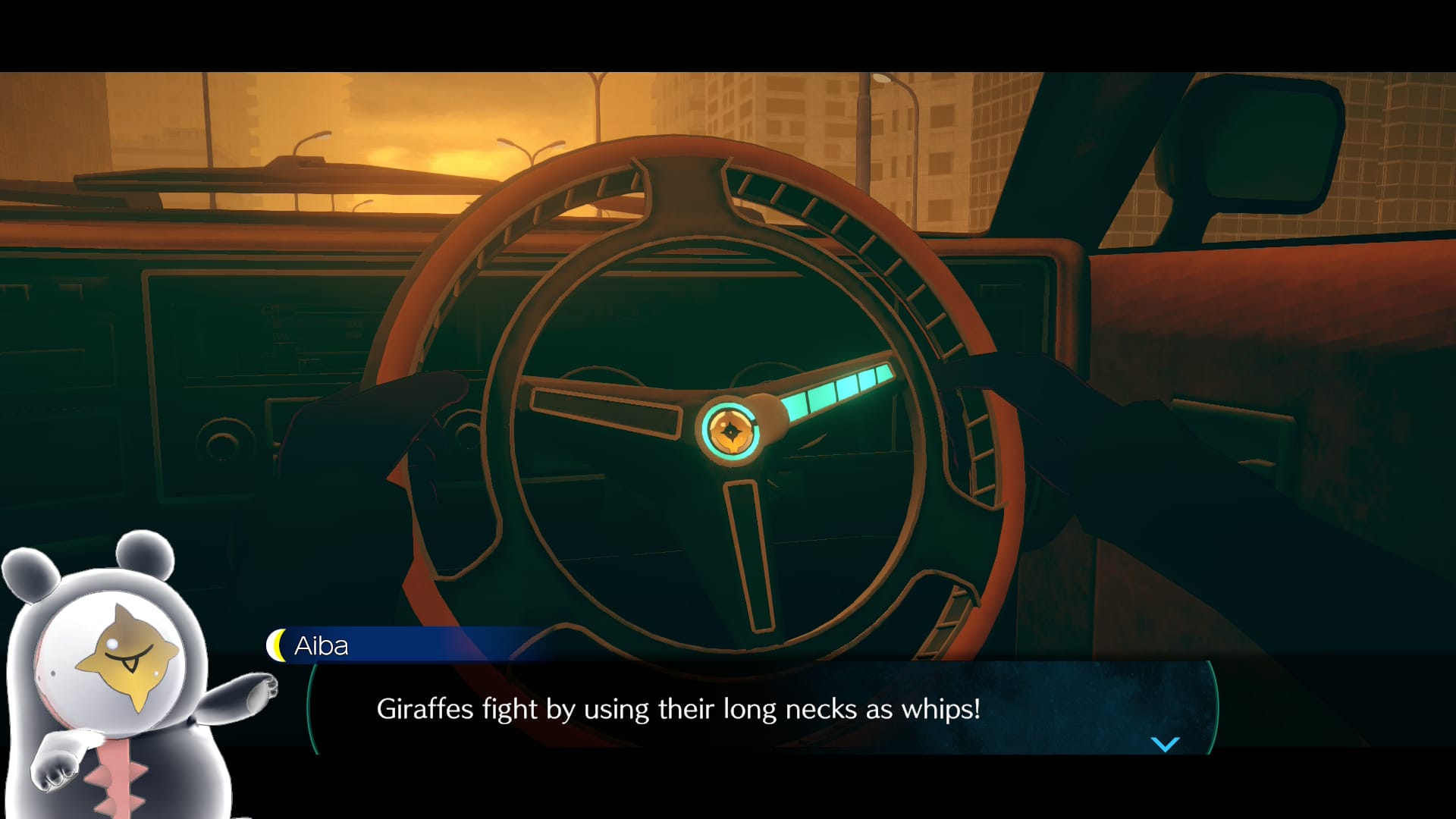
AI's humor is so ridiculously random and affectionately stupid that it feels akin to viewing close friends making inside jokes to each other. It builds rapport when Date and Aiba randomly start going into an in depth conversation about the science of giraffe necks during a kidnapping case, as the passenger in their car looks at them like they're insane.
Additionally, the joke writing itself was a pleasant surprise. Yes, the series staples are still here: Date still loves talking about porno mags, Aiba gets giddy whenever she sees insects, and Mizuki and Date still show their fatherly and daughterly love to each other by getting into a fist fight where the twelve year old uses a metal pipe to absolutely trounce on the cop with a gun and an advanced AI eyeball.

And for Uchikoshi fans, fret not. Yamada stays true to the former’s signature style of having the characters randomly spout paragraphs upon paragraphs of random conspiracy theories and scientific mumbo jumbo that relates to the plot. I wouldn't have it any other way.
But the script isn't just reliant on the same few tricks. In particular, the porno mag jokes during the action scenes feel the most restrained they’ve ever been. Instead, the game carves brand new bits; just as dumb as the past two entries, but still in line with their ridiculous nature. While the bigger gags never reach the memorable heights of AI and AINI, No Sleep is the most I consistently laughed at in the series.
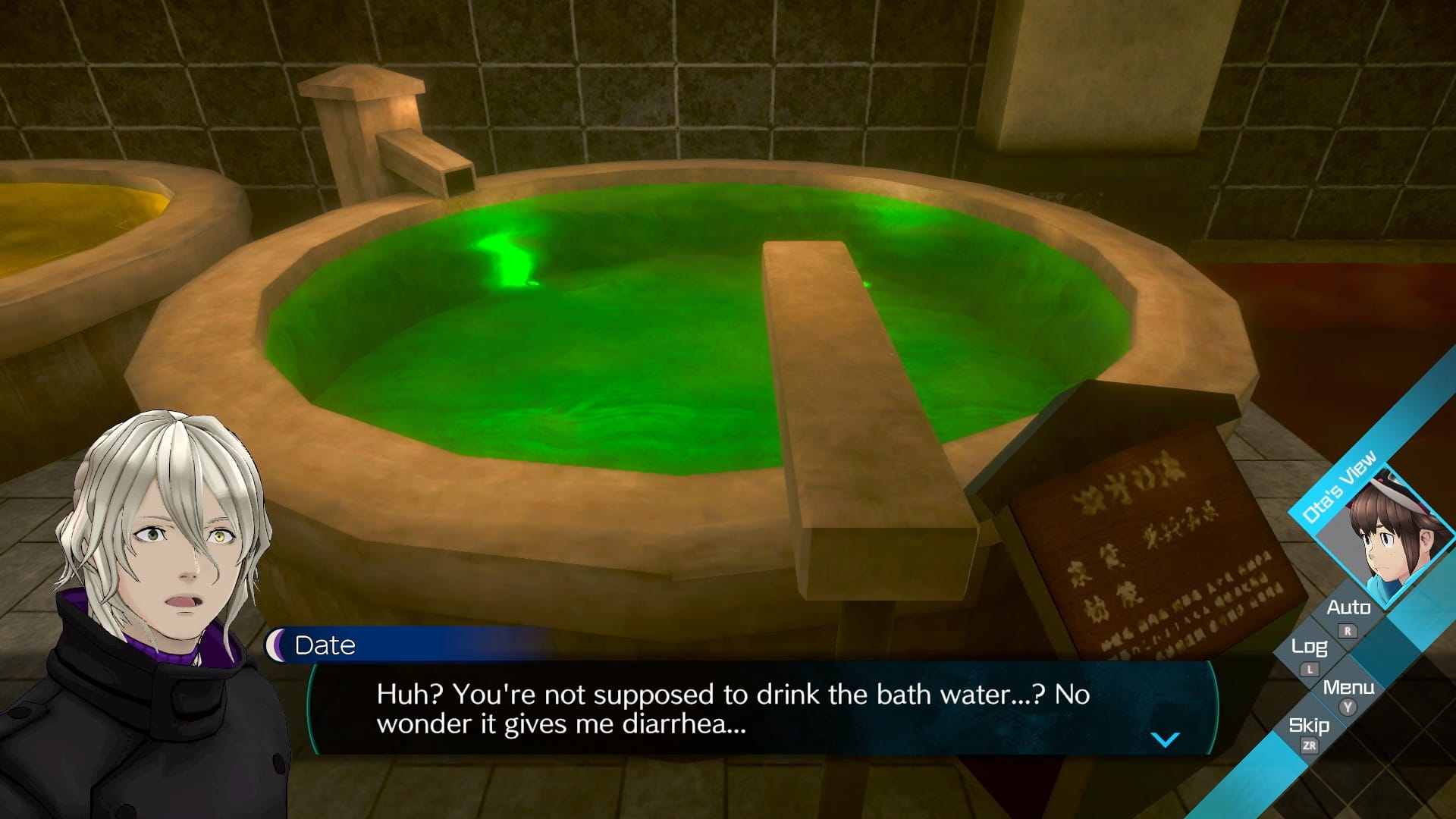
I've mentioned before how Yamada excels at bringing to life the emotion driven scenes, expertly identifying key lines and character moments as a basis for this entry to expand upon. As a result, almost everyone feels in character with Uchikoshi’s characterization. And once again, how the Somnium portions of AI tie together gameplay and storytelling.
When the investigation in the real world reaches a standstill, Date and Aiba must dive into the dreams of suspects and witnesses to uncover clues and deeper truths. The series describes it as Psyncing into a subject’s Somnium. These remain nearly identical to how they played in AINI. A majority of them even use the same locals present in the first two games.
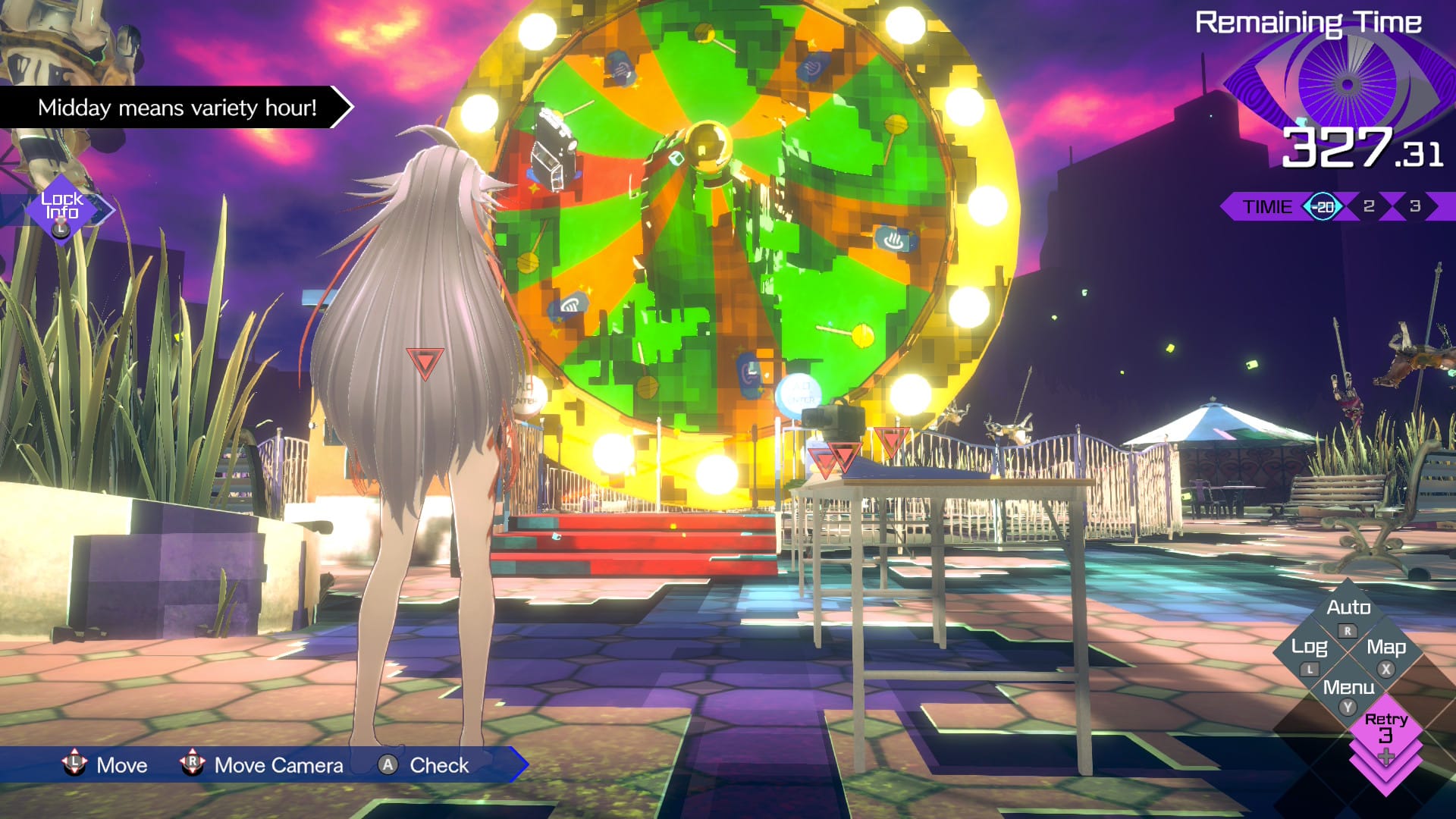
Progression through the dreamscape is dictated by unlocking the various Mental Locks of a person’s psyche. Essentially a cryptic prompt is given on how to open the lock, and it's up to Date to instruct Aiba on performing the correct action to many of the interactable objects in the environment within the six minute time limit. Time nearly stands still whenever Aiba is immobile, but ticks down at normal speed whenever she moves.
When interacting with an object of interest, you can select multiple actions each costing some of your remaining time. Most actions will award the Psync duo with a TIMIE. These buffs or debuffs modify the amount of time an action will take. Clearing the Somniums within the time limit requires careful time management to efficiently find the correct interaction.
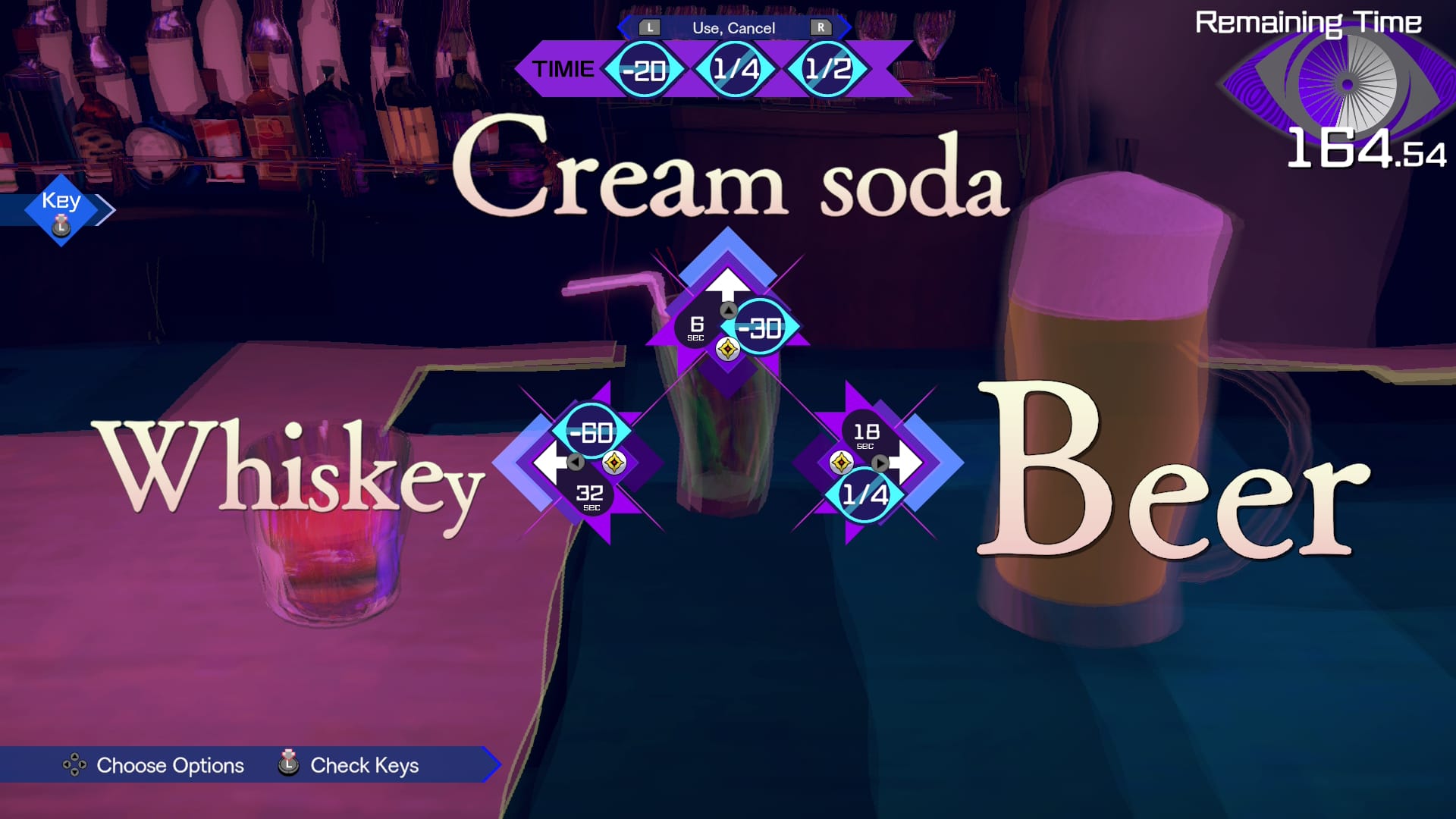
Dream logic adds a trippy wrinkle to solving each lock, bringing in illogical set pieces to interact with to find the logical way forward in the dream. Overall Psyncs are fun, laid back brain teasers with just the right amount of tension with the time limit. The only minor note I have is how there aren't any varied locals or unique gimmicks compared to its predecessors.
The shining aspect of these dream sections is their integration in the narrative. Thematically, No Sleep For Kaname Date loops back to the first game's initial Somnium being used as therapy for someone with deep mental wounds. As a result, each Psync still held my attention by being character driven, even when disregarding the solid gameplay. I just wish there were more than the handful we got, especially because the other major gameplay style cannibalizes the Somniums by taking just as much playtime.
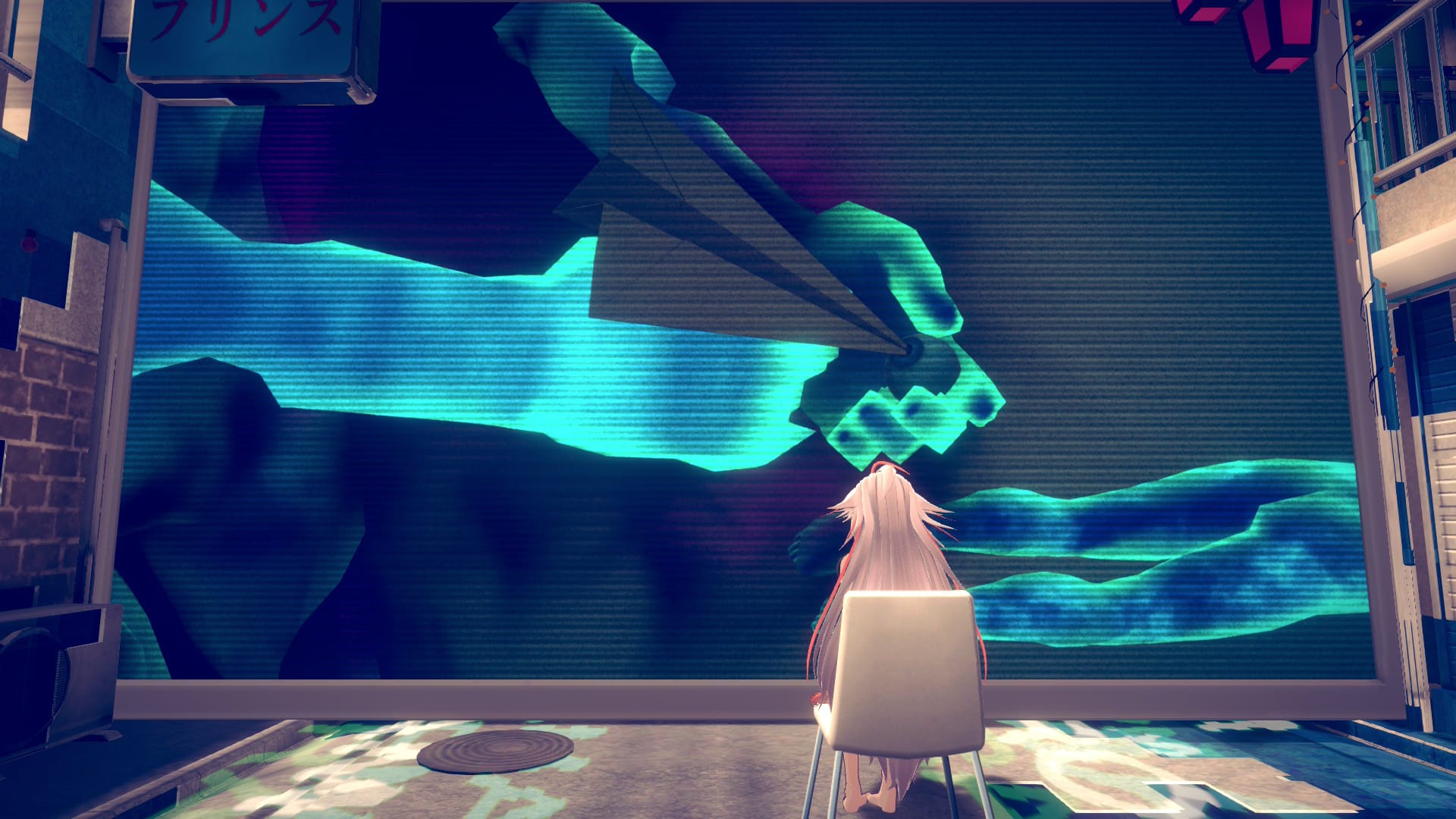
I really wanted to love the Escape portions of No Sleep For Kaname Date. Uchikoshi's previous series, Zero Escape, is one of my favorite series. Thus seeing how this gameplay style was a direct callback to that franchise had me all giddy with excitement. On the surface, all seems well. Iris must escape the various rooms by obtaining various items and using them to solve the puzzles scattered about. Furthermore, you can combine items together to form new potential solutions. Occasionally, you have to solve a brain teasing minigame to proceed. Each room culminates into Crisis Time, which introduces a timer to the final puzzle.
Fans of Zero Escape will feel right at home with this core loop, as the structure is near identical. Also, there are visual and auditory references with the various sound effects, and how each puzzle starts with a SEEK A WAY OUT title card with a jingle of 999's Morphogenetic Sorrow. Low hanging fruit yes, but it was some delicious fruit to gobble up... until the bitter taste starts to reveal itself.
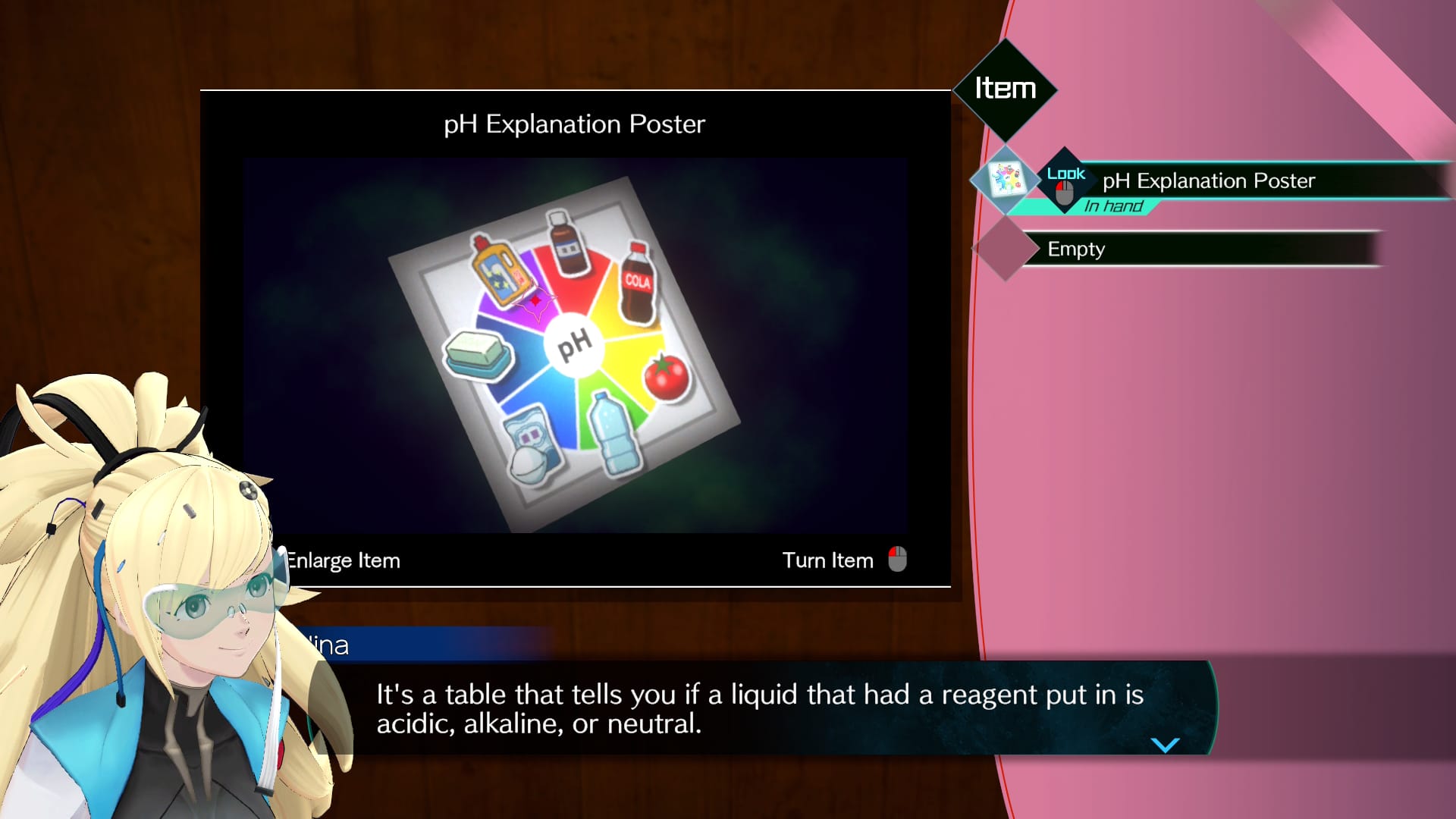
For starters, these puzzle rooms take way too long to finish; ranging from around 20 to 40 minutes. This is in stark contrast with Zero Escape, where I rarely stuck in a room for more than 20 minutes. Multiple factors contribute to this. The shift from ZE's point and click style to full 3D movement was a neat novelty starting out, but the combination of the slow jogging speed with the large areas makes traversal a slog.
I primarily played on the standard puzzle difficulty, meaning I got a limited number of uses of the Search function; highlighting the interactable objects in the environment. It was tedious having to walk to and from each node to progress.
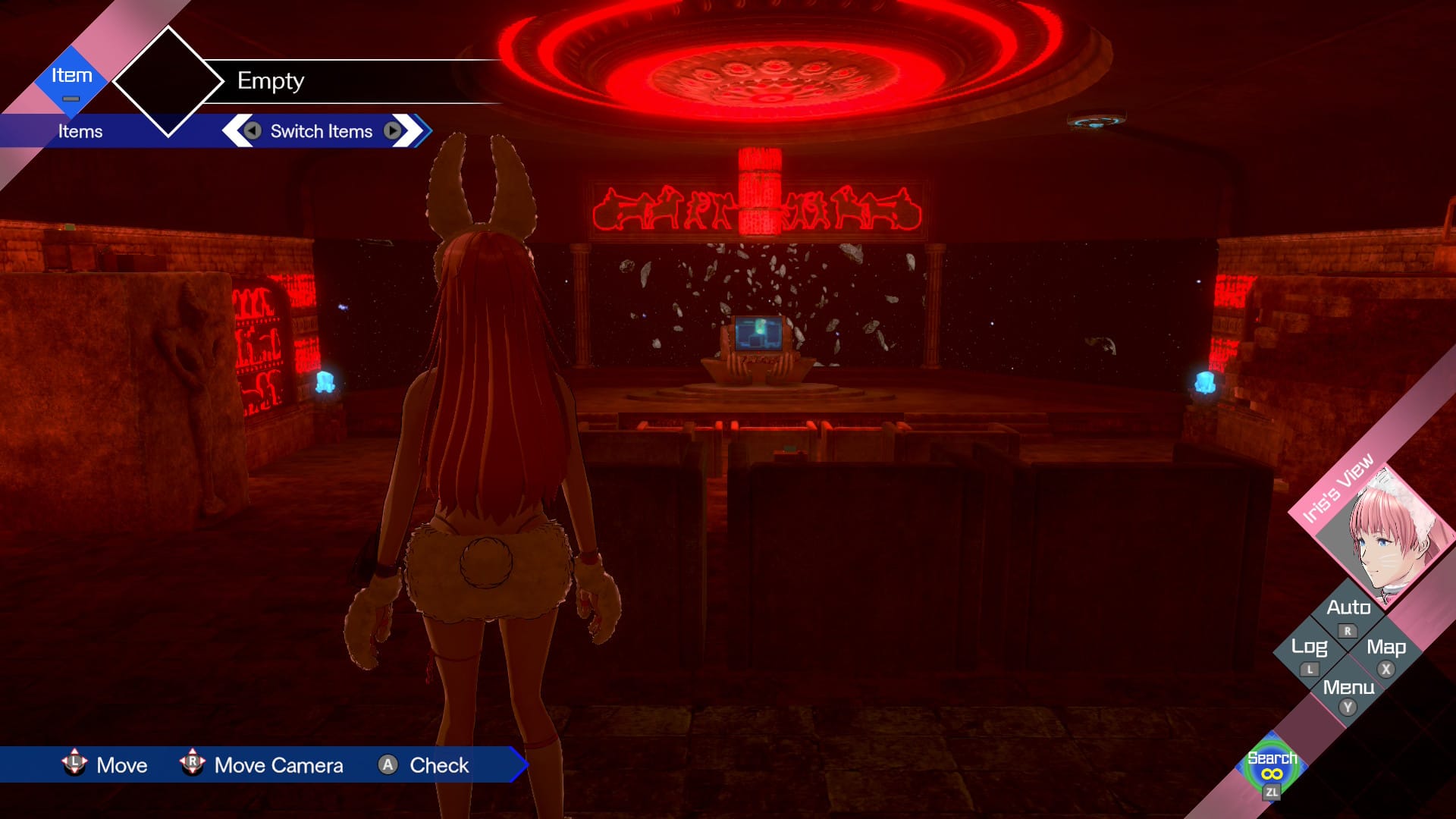
Exacerbating this problem is when other characters get introduced to assist Iris. Switching characters further expands the many different areas that you can explore, which means more slow walking. It's such a pace killer for what's already sluggish gameplay. Still, there are some clever uses with this mechanic, mainly how the characters need to figure out how to deliver items or clues to the other to progress on their side of the escape room.
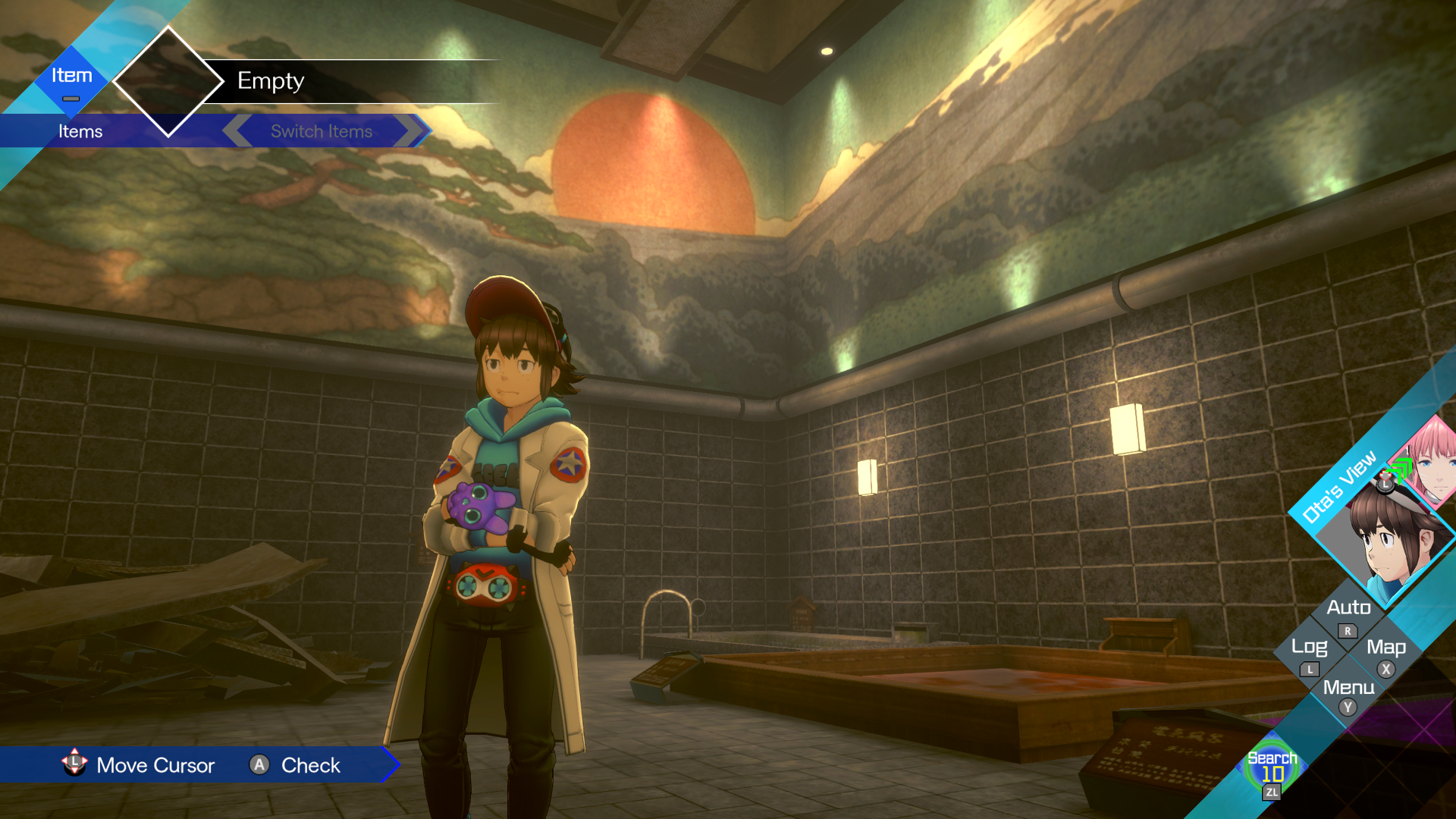
Regarding the actual puzzles themselves, they're just okay. While they don't come close to reaching the highs or complexity of Virtue's Last Reward's, there is still a level of satisfaction in solving each challenge. Again, the biggest issue is just the exhausting amount each room offers.
Despite my multitude of issues with the gameplay of the escape rooms, it didn’t really do much to detract from my enjoyment of the game. For visual novels, subpar gameplay it’s just a mild inconvenience to get to the actual bulk of the game: the story. No Sleep even offers a difficulty mode that will straight up say the solutions to a puzzle for to those who want to focus on the genre's main attraction.
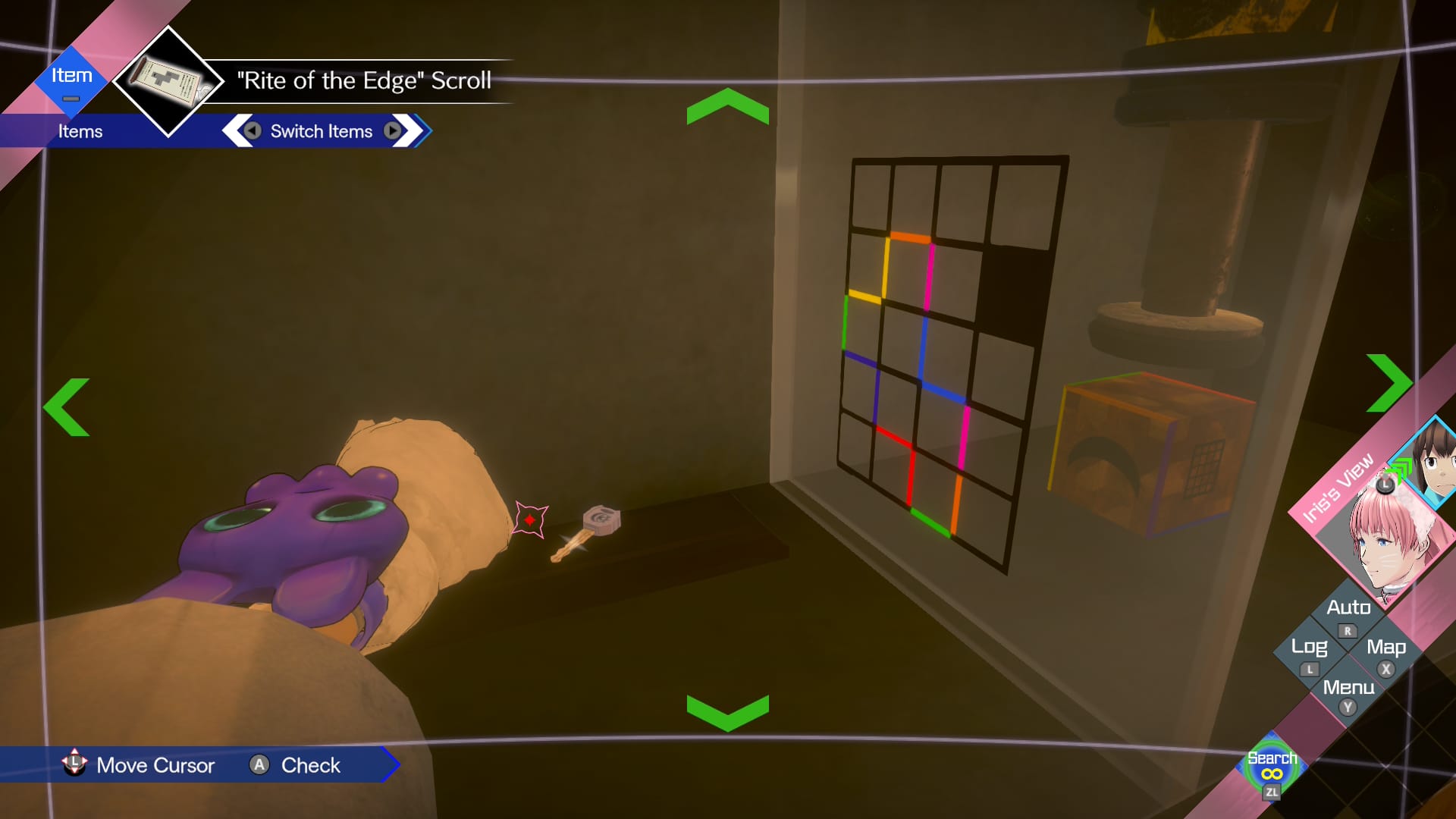
As for the Third Eye Game's integration into said story, there's some good news and bad news. Let's get the bad out of the way first. Iris doesn't really add much to the story. This is my only other issue with the narrative outside its structure. Her kidnapping as the inciting incident only serves as a plot device for the investigation to occur. With how well various story beats built off of the first AI, it's disappointing how such a crucial character feels tacked on.
By contrast, the role of the escape games in the overall mystery is simple, but effective at building Akemi's character. I adore how the AI series always confidently telegraphs who their perpetrators are; trusting the construction of its scenario to surprise the player with the details of the case. The dramatic heft of her character is crammed with too many exposition dumps in the backend for my liking, but nonetheless the sardonic lizard remains a fantastic and unique antagonist for the series.
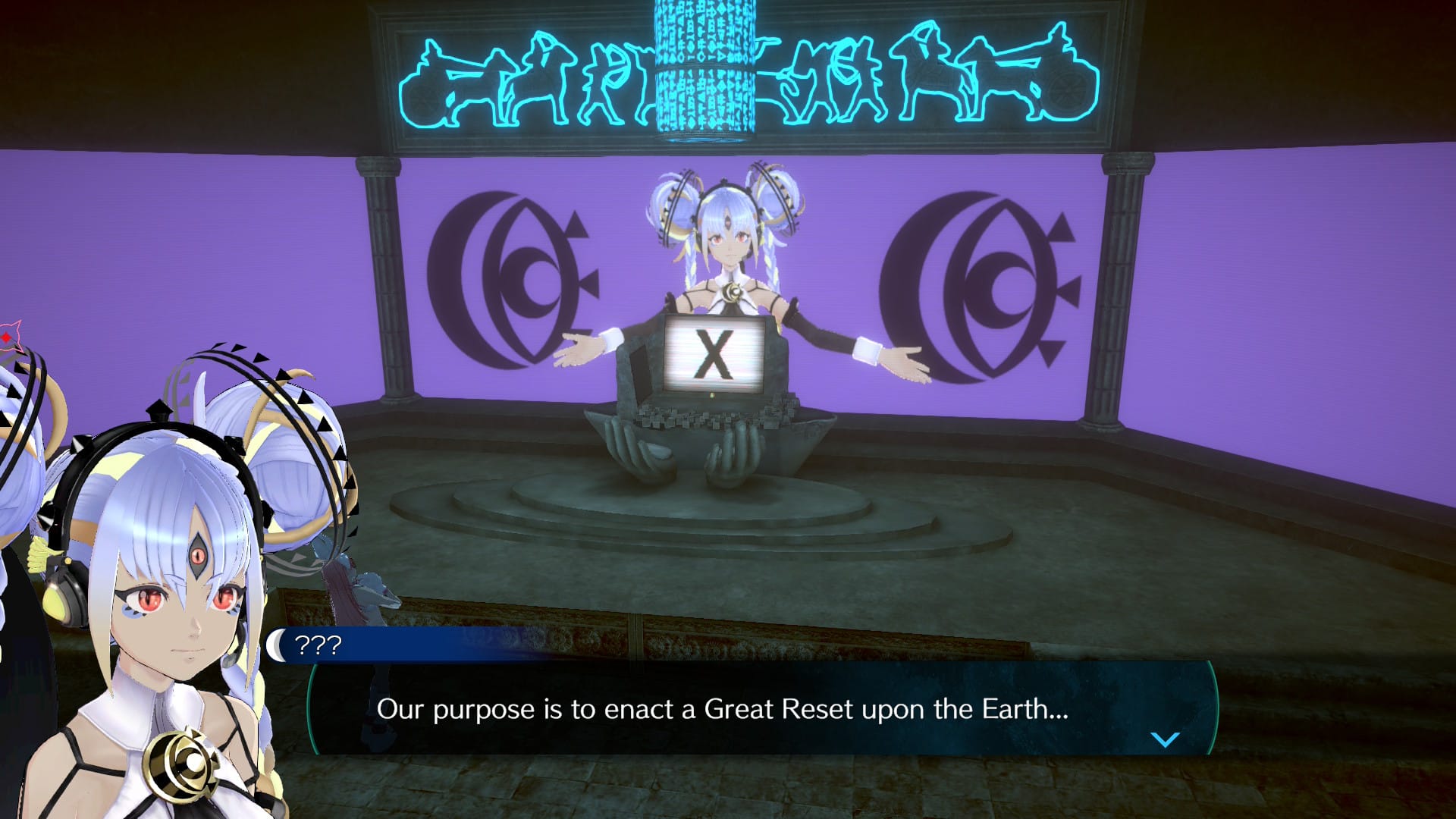
I have to give a shout out to Jenny Yokobori, the voice actress who wonderfully brings Akemi's emotional depth to life in the dub. The host of the escape game goes through a range of emotions, from her quips dripping with sarcasm, to gut wrenching screams of anguish, and Yokobori delivers them phenomenally.
The voice acting in general is superb across the board. AI has always had fantastic dubs, but everyone gives their best performance in the series yet. As always, Greg Chun’s legendary line reads as Kaname Date unites all the queers to shame this pathetic detective man (affectionate).
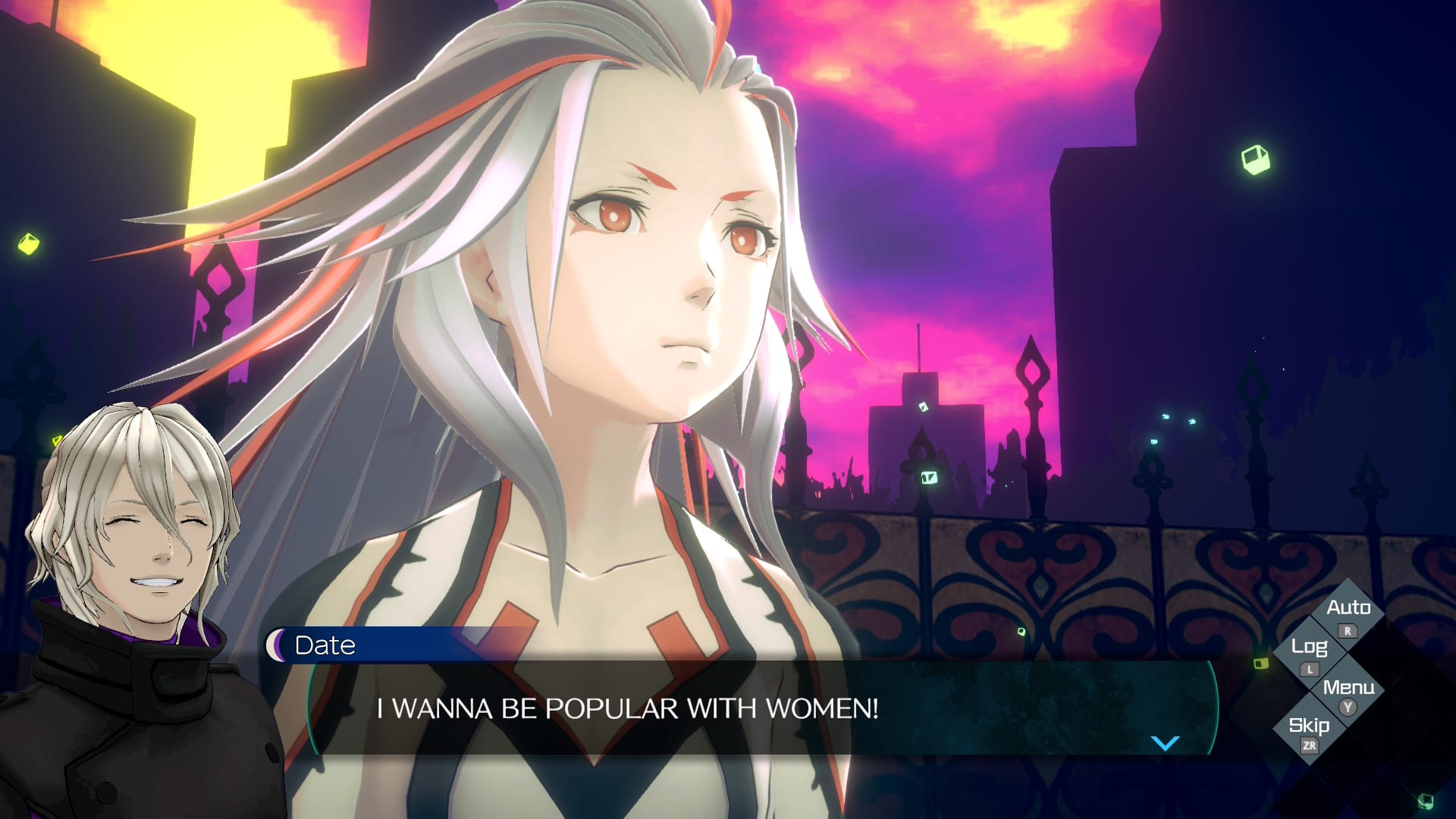
Regarding the other facets of presentation, No Sleep recycles a good amount of its music and environments from its predecessors. Most of the new tracks and locals appear near the end of the adventure, in addition to the various space themed escape rooms in the Third Eye Game. Once again Keisuke Ito provides another treat for the ears with the original soundtrack, and the new locations are loaded with cool easter eggs and symbolism to the story at hand.
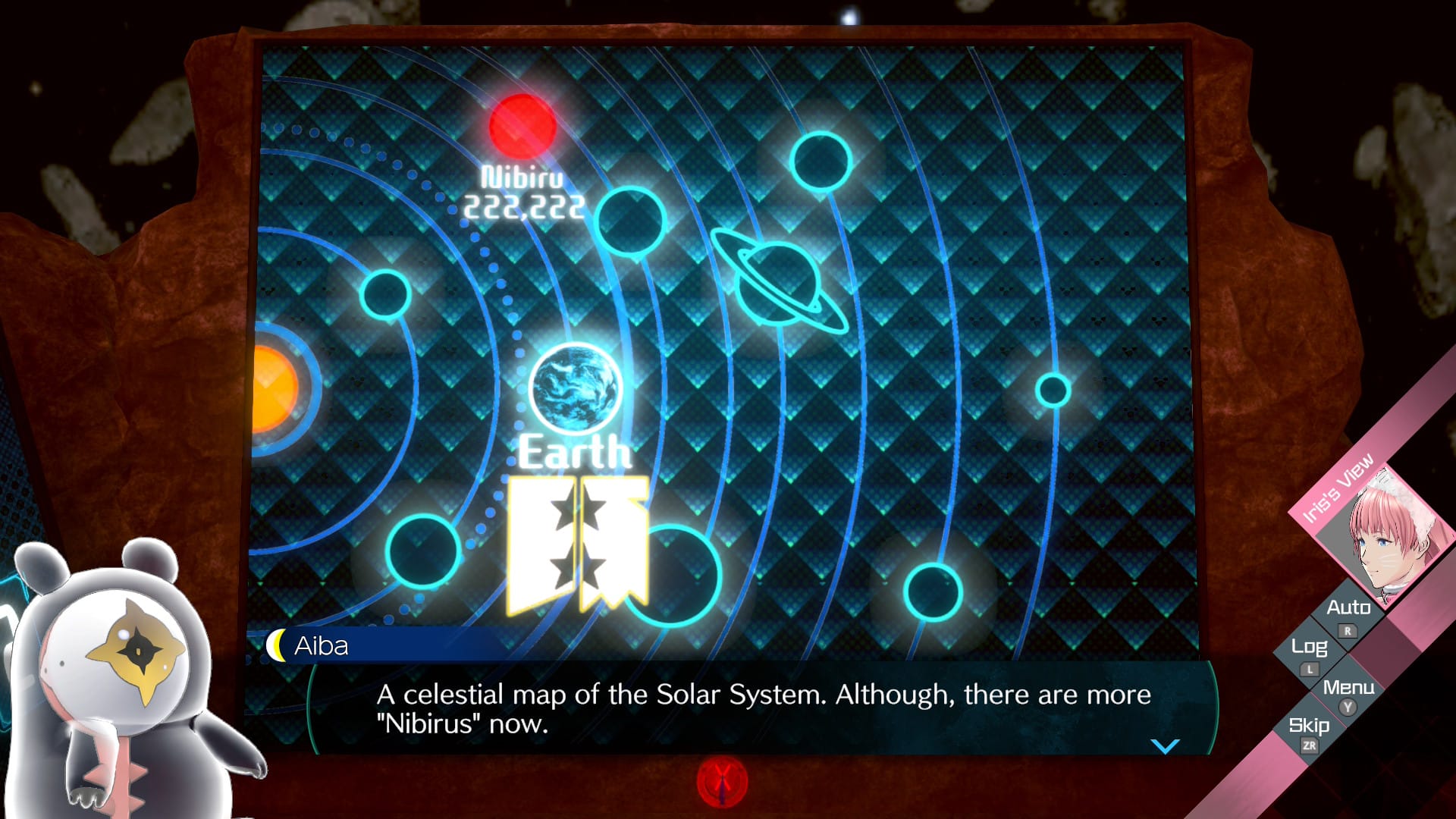
My time with No Sleep For Kaname Date was primarily spent on the Switch version running on Switch 2. For anyone who’s played the previous AI games on Nintendo’s former hybrid system, it performs comparable to those entries. Even if the 3D models and cutscenes makes the AI franchise more demanding compared to other visual novels, it’s still not a taxing set of games in general.
The Switch handles this entry mostly fine, and is my ideal way to play this series thanks to the touchscreen and portability being great fits for VNs. The main returning issues are the crunchy character models due to the lack of anti-aliasing, and having one crash during a pivotal scene. Fortunately this only happened once my entire playthrough, the autosave meant I didn’t lose too much progress.
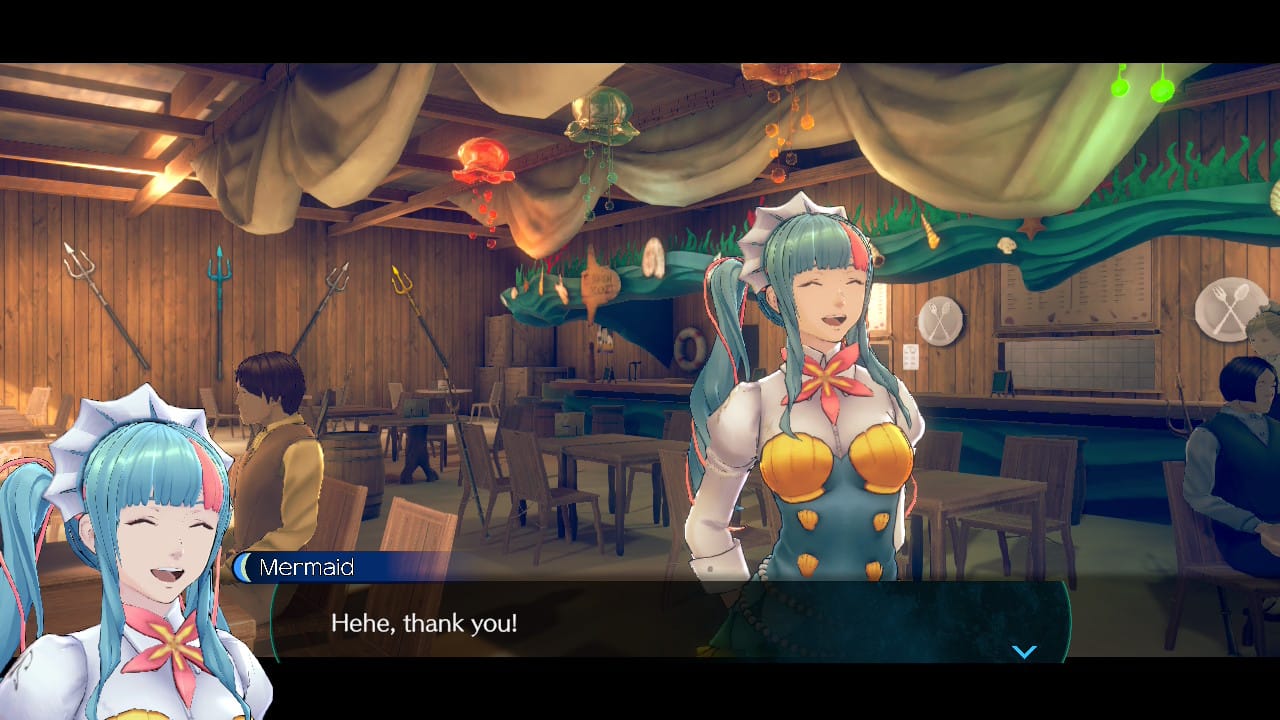
The Switch 2 version offers improvements standard for more powerful hardware: faster load times and improved visuals. Character models no longer have the crunch that plagued the series on base Switch. There is additionally a toggle for performance or quality mode. Unfortunately I was unable to test quality mode due to this feature not being available in handheld mode.
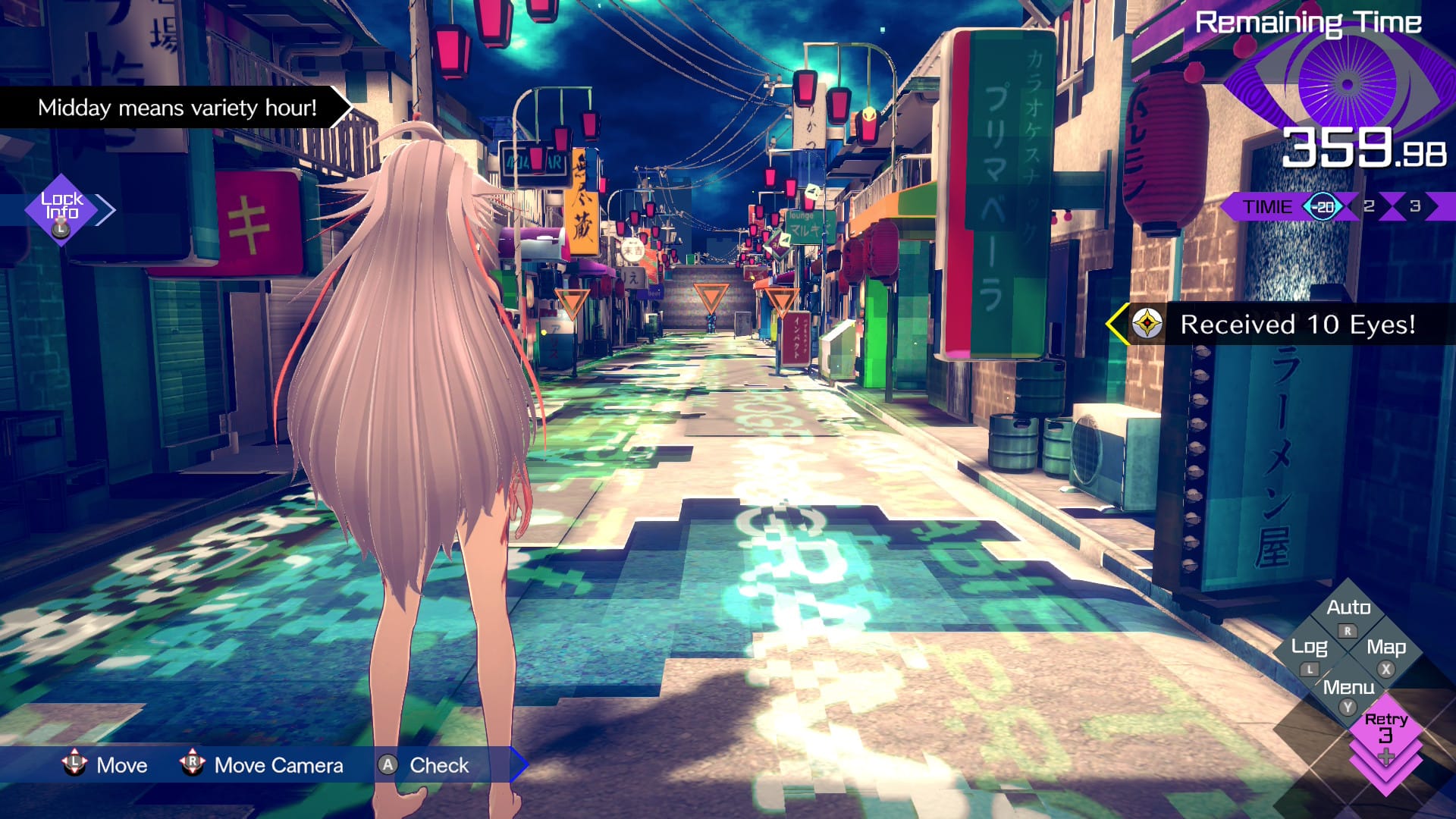
The biggest new feature the Switch 2 port touts over the base Switch is mouse mode. Its implementation is functional, but too rigid in its options. For starters, there is no way to combine mouse mode with the standard control method. You have to commit between one or the other. Heck, you can’t even use the touchscreen during mouse mode. My ideal setup would have been the standard controls, but using the mouse feature just for the pointer. A bizarre restriction is the mouse only applies to the right Joy-Con. even though both are capable of this system feature.
As for the actual pointer functionality, it works fine. The mouse does indeed work like a mouse. The only control issue I had was how unintuitive moving the camera is in third person. The mouse still only controls the pointer reticle, meaning you have to hold the trigger and drag the mouse to move the camera. Both functions were handled by the right stick in controller mode because the recital wasn't used in third person.
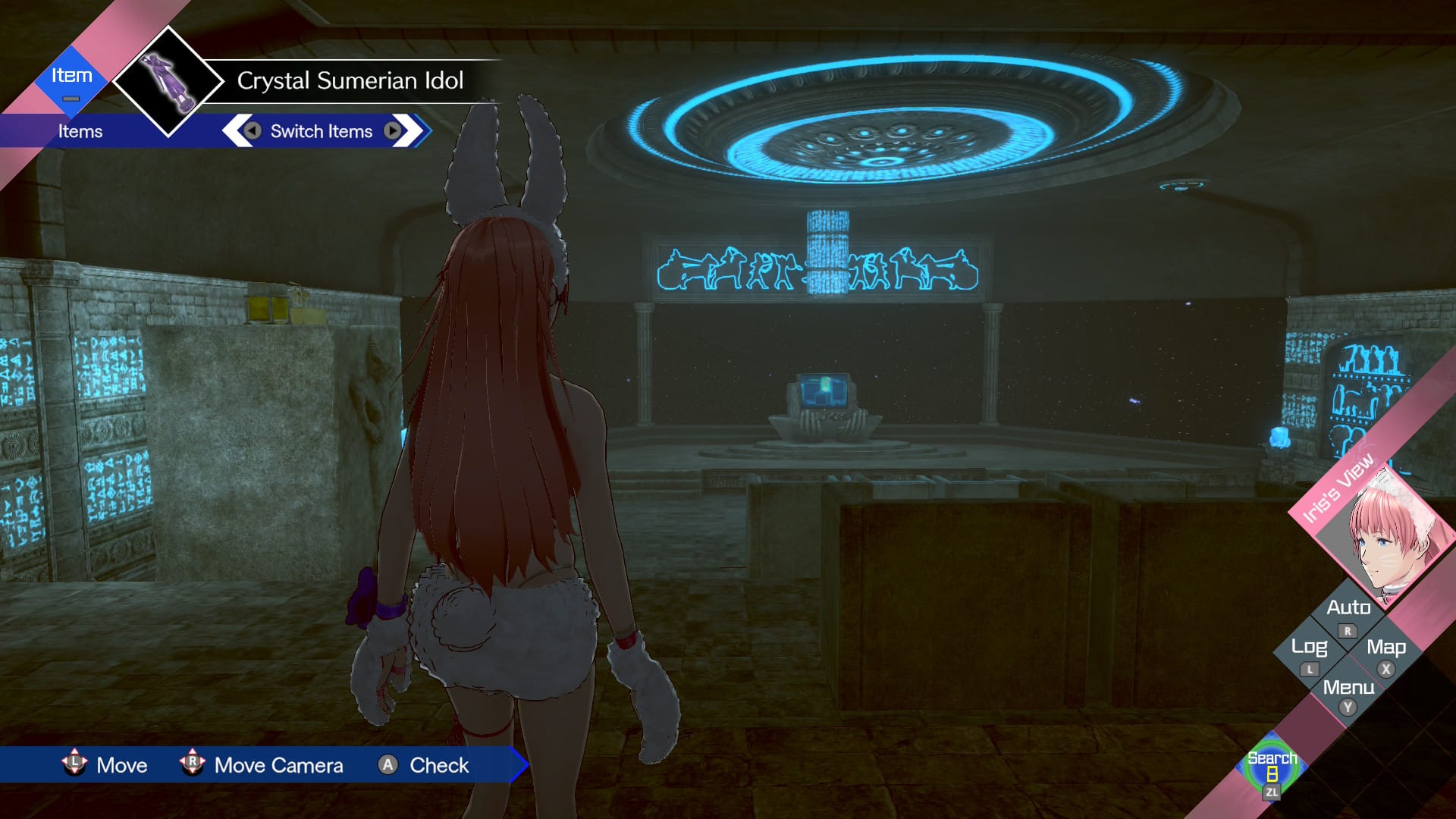
One of the biggest surprises of this side entry is the amount of side and post game content. To reiterate, No Sleep does not have a flowchart. However, the flowchart icon in the menu in this linear game allows the player to see unlockable gag endings. For veterans of the series, the receptionist ending is an apt way to describe them. You can discover them by repeatedly clicking a certain item or dialogue to initiate them. Also during these sections, you can find small Adorabbit stickers hidden in the environments.
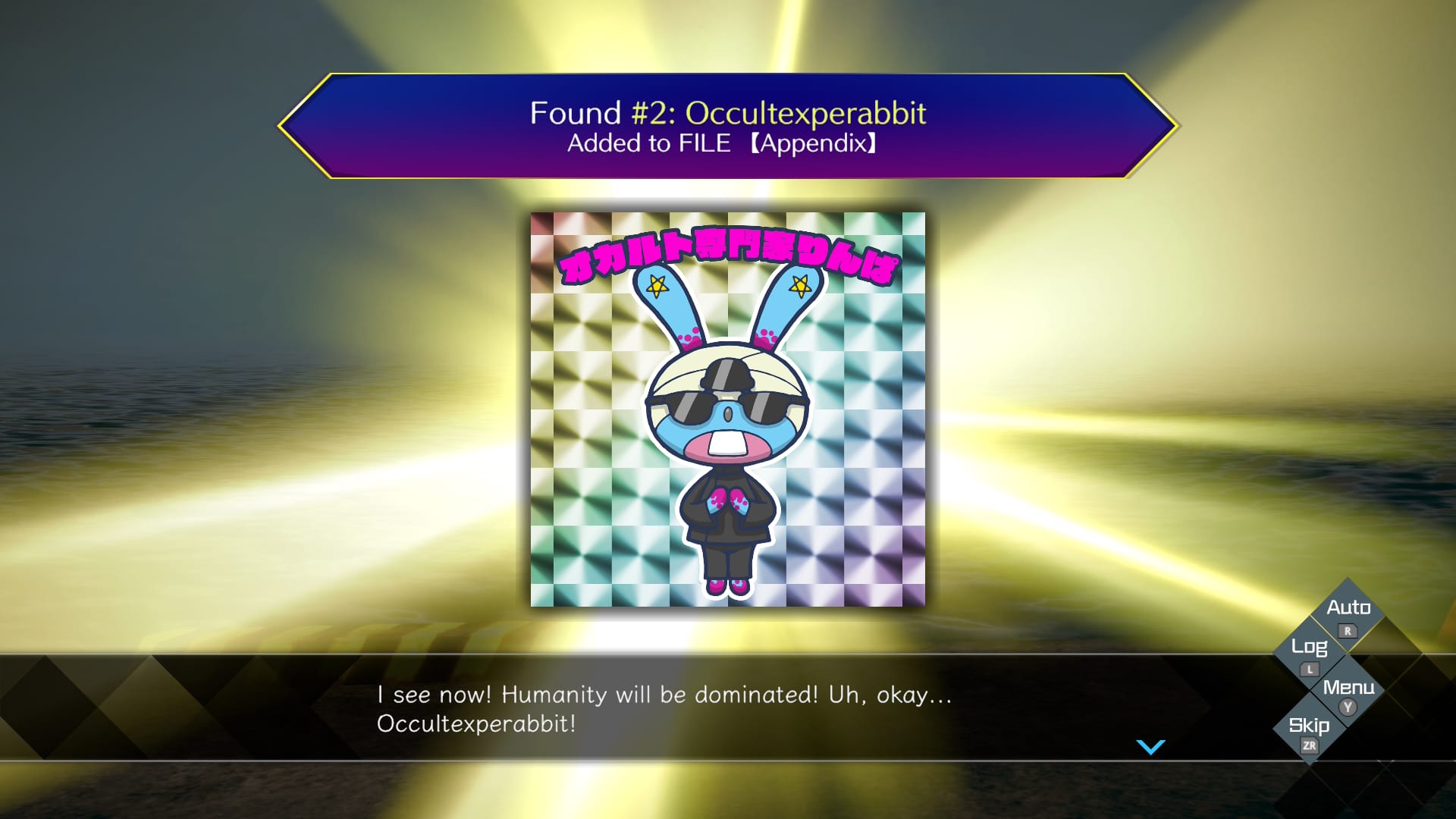
Somniums and the escape portions have replay incentives with collectables and side objectives. Completing these will reward the player with more Eyes currency. These can be utilized to purchase concept art and extra slice-of-life scenes. The bonus stories serve as a great excuse to keep spending time with this lovable group of dorks. They feel fleshed out too for what’s essentially fanservice; providing heartwarming character interactions I’ve always wanted to see. They are an easy recommendation if you’re a fan of the series.
No Sleep For Kaname Date - From AI: THE SOMNIUM FILES
Great
Believe it when Uchikoshi says No Sleep For Kaname Date is a game made by fans, for fans. Kazuya Yamada delivers a heartfelt epilogue to the first Somnium Files’s self contained story. While the pacing feels a bit listless thanks to the narrative structure, and the escape rooms are straight up miss, those ended up being small blemishes in the grand scheme. What I'll remember is seeing characters new and old grieve and heal together. I laughed, I cried, and most importantly I was moved seeing the chaotic duo of a cuckoldry obsessed detective and his AI eyeball partner get no sleep because of the friends they made along the way.
Pros
- Beautifully touching epilogue to the first AI: The Somnium Files
- Strong thematic parallels between the old and new cast
- Some of the best writing in the series
- Kaname Date is a delightful protagonist
- Somnium sections are fun, trippy gameplay sequences
Cons
- Overly long and tedious escape rooms
- Iris doesn’t do much in the story
- Some technical issues on Switch 1. Tacked on mouse mode on Switch 2
This review is based on an early Nintendo Switch copy provided by the publisher. No Sleep For Kaname Date - From AI: THE SOMNIUM FILES comes out on July 25, 2025.
